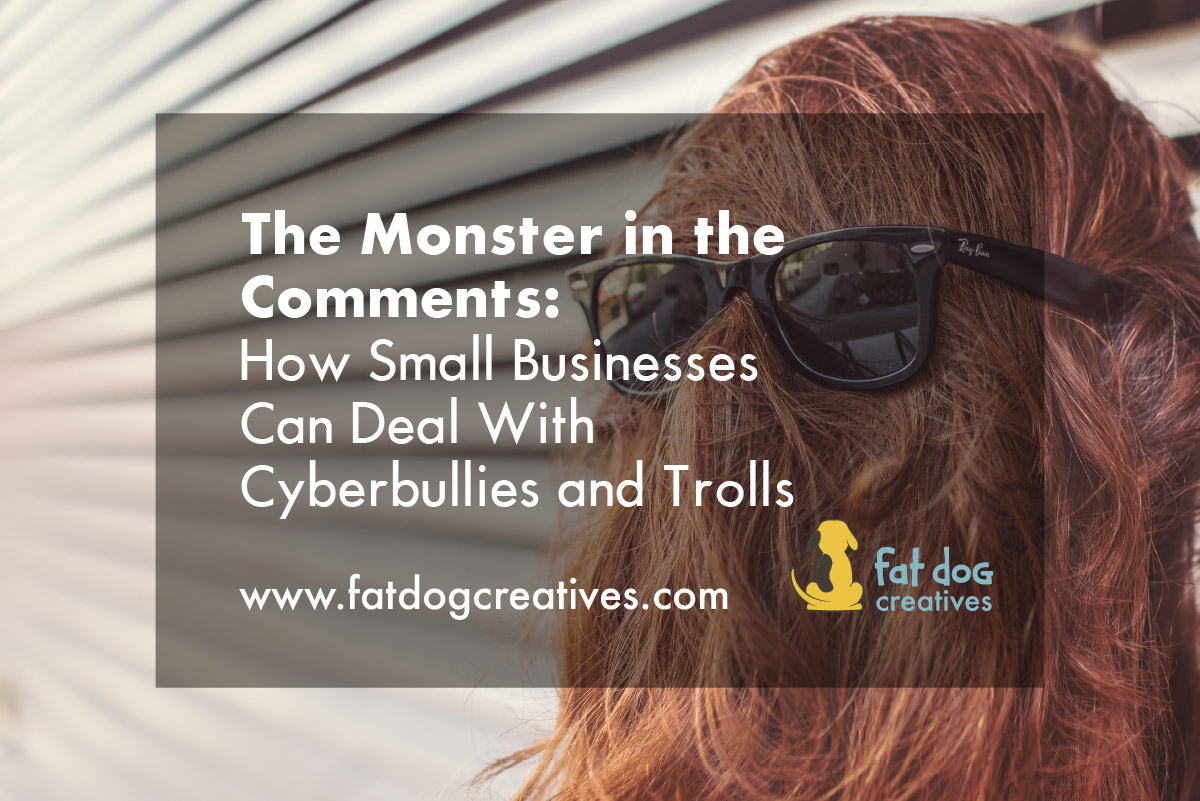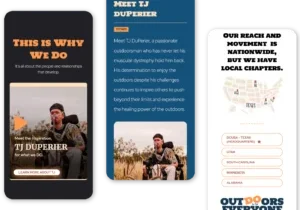Cyber Bullying, The Monster in the Comments
Share this article.
Cyberbullying does not exclusively target individuals. Businesses can also be the targets. In 2017, a tow truck operator sued the creator of a Facebook page that claimed to be a public service announcement regarding allegedly fraudulent conduct of the tow truck operator. (Thanks to Todd Brogowski at Todd's Written Word, LLC for assisting me on this writing project to address this important topic.)
The Monster in the Comments: How Small Businesses Can Deal With Cyberbullies and Trolls
We all know that the consequences of cyberbullying and trolling have become a dramatic problem for individuals, but in the past few years, it has also become clear that they are dramatic problems for businesses as well. This article takes a look at the problem of cyberbullies and trolls, how they can impact businesses, steps we, as business owners, can take to respond to trolls and cyberbullies in the short term, and how businesses can – and should – have a long-term plan in place to mitigate the impact of cyberbullying.
Anonymous depravity: the effects of cyberbullying and trolling
Cyberbullying, just to define our terms, is the use of information technology and communications technology to harass, intimidate, threaten, stalk, manipulate, or otherwise disrupt the life of a person or other enterprise. Over the years, there have been many dramatic cases of cyberbullies engaging in excruciatingly malicious conduct, sometimes leading to the deaths of the victims.
One of the earliest cases took place in Vermont in 2003, when Ryan Halligan, a learning disabled 13-year old, was manipulated into sharing embarrassing personal information by an accomplice of the cyberbully. The cyberbully then used this information to falsely portray Halligan as gay, leading to Halligan hanging himself.
In 2010, Rutgers University student Tyler Clementi committed suicide after a cyberbully – in this case, his college roommate Dharun Ravi – used a concealed camera to stream video and created Twitter posts regarding Clementi’s relationship with another man. The Superior Court of New Jersey convicted Ravi for his conduct, but, perhaps reflecting the inability of the law to handle new problems created by the rise of the internet, only sentenced him to 30 days incarceration for his role in Clementi’s death.
In 2014, a group of Texas high school students used Instagram to post nude and partially dressed photos of their fellow students to over 900 followers before the parents of one of the victims sued the group. This 2014 case was one of many civil lawsuits that targeted both students engaging in cyberbullying and the school districts that failed to take appropriate steps when made aware of cyberbullying. A more recent federal district court case involving an Arizona man who harassed a Kent, Washington, couple over the course of many years led to a 2015 verdict that included an award of $8.9 million in damages.
We can project that a private business will be sued for cyberbullying-related misconduct, either due to the misconduct of one of its employees or due to the official content posted by the business on social media or its own websites. Under US legal doctrine, businesses can be liable if an employee engages in misconduct in the course of their workday duties. In particular, the issue of workplace cyberbullying, where one or more employees target another employee, has already become an issue in the public conscious.
Cyberbullying does not exclusively target individuals. Businesses can be the targets as well. In 2017, a tow truck operator sued the creator of a Facebook page that claimed to be a public service announcement regarding allegedly fraudulent conduct conducted by the tow truck operator.
Taking immediate action to mitigate cyberbullying and trolling
Responding to cyberbullying, harassment, and trolling well means reacting to it quickly and appropriately. For a business, damage control must begin with active monitoring of social media accounts and websites for business mentions, combined with the use of web search alerts (such as Google Alerts) for mentions of the business on other websites.
Once a business sees that it is receiving negative mentions on social media, its websites, or on other websites (through search alerts), it needs to determine whether it is dealing with (a) legitimate concerns regarding the business or (b) actual trolling or bullying.
Legitimate Concerns and Criticism
When a business is facing actual concerns regarding the conduct of its staff or the quality of its goods and services, it should respond to those concerns with transparency, respect, and a desire to satisfy a customer. This is key because (1) the business’ response is seen not only by the customer that perceives themselves as aggrieved but also by many other potential and existing customers. As a pop culture example, one of the restaurants featured on Gordon Ramsey’s reality television show, Kitchen Nightmares, Amy’s Baking Company, developed infamy for its combative approach to responding to dissatisfied customers, leading to a firestorm where people not even in their market reviewed the business (negatively) on Yelp because of how the restaurant was perceived. The restaurant eventually closed its doors as a result of this negative publicity. Had the business instead responded with transparency about why it chose to engage in specific practices, and why they believed those were the right business practices, it is possible the show would have worked to bolster the popularity of the restaurant.
While addressing how businesses should deal with legitimate complaints is not the primary goal of this article, businesses should set a goal of responding to legitimate concerns by customers in a fashion that is:
- Rapid;
- Transparent; and,
- Friendly (or at least respectful, if being friendly is not possible).
Businesses should be able to acknowledge a valid customer concern within 24 hours in a fashion that openly acknowledges the issue raised by the customer and either satisfies the customer or at least shows the business will work to eliminate the problem in the future.
External Cyberbullying and Trolling
In the short term, when facing a single troll or cyberbully engaging with the business from outside the company, businesses need to decide how they will approach that individual (for a widespread cyberbullying or trolling campaign, a more advanced response is required, as will be discussed below).
Establishing long-term strategies to address the impact of cyberbullying and trolling requires having a policy in place that is known by all employees that engage in social media management and interact with the consumer. For example, for a small restaurant or pub, it may rely on bartenders or shift managers to maintain its social media presence. The restaurant or pub owner should ensure that all bartenders are trained on and have access to a hard copy of the policies and procedures concerning dealing with cyberbullies and trolls. Why? Because the worst-case scenario for responding to cyberbullies and trolls is public – and documented – misconduct by a business’ employees that drives away legitimate customers or exposes the business to legal liability.
Businesses should include the following elements for employees to follow when a cyberbullying or trolling incident is suspected to have occurred:
- notification of business leadership;
- guidelines for determining whether to delete, block, report, or respond to the cyberbully’s content; and,
- rules for addressing the general public regarding the cyberbullying or trolling incident, if at all.
Public relations decisions like how to deal with trolls and cyberbullies should not be made without the knowledge of management or ownership. Because these decisions can have a dramatic adverse effect on a company’s bottom line, businesses should include responsible leadership in crafting its public response to trolling and cyberbullying.
Responding to cyberbullies and trolls well generally means following the adage not to feed the trolls. While this may seem like advice to respond to trolling or cyberbullying with silence, that is not the case. Businesses should be transparent in how they respond to trolls and bullies. If a company observes trolling on its site, it should consider removing the offending content and advising others visitors why the content is not tolerated on its site. The reasons for this are twofold:
- first, blocking/deleting offending content protects the business’ reputation as a safe and friendly environment for its customers; and,
- second, notifying visitors of the business’ standards for content protects the business from liability and loss of consumer goodwill.
Internal Cyberbullying and Trolling
One area in which small to mid-sized businesses with multiple employees or close relationships with contractors need to be careful with is the intersection of human resources and cyberbullying. When employees take to the internet to cyberbully their peers, businesses need to ensure that they respond appropriately. Internal cyberbullying can implicate state harassment laws and potentially implicate state and federal anti-discrimination laws, if the language used relates to a protected class. If businesses lack an internal human resources department to handle compliance in such matters, they should consider contracting with a human resources professional when they identify that there are cyberbullying issues. As noted above, businesses are exposed to litigation when they fail to properly address internal harassment such as cyberbullying.
Large Cyberbullying or Trolling Events
Large-scale trolling or Cyberbullying events, such as the kind experienced by ABC Baking Company after its disastrous appearance on Gordon Ramsey’s Kitchen Nightmares or Pepsi after its ham-handed Kendall Jenner advertisement, are uncommon, but merit discussion. Businesses should do their best to ensure their employees do not, by their on-duty actions, attract the sort of negative attention that encourages mass Cyberbullying or trolling, but sometimes this may be unavoidable. When businesses are faced with decisions of conscience (or forced to engage in unpopular decisions, such as layoffs), there may be backlashes. In such cases, it is best to have a pre-existing plan to deal with trolling or Cyberbullying.
The first step in such a plan would be to identify and react to it with a coherent plan. Businesses who may expect a negative backlash in response to a decision they know will be unpopular should reach out to public relations professionals. Some business insurance providers, such as the Chubb Group, have started offering insurance policies intended to address the public relations costs of Cyberbullying and trolling. Additional steps may include closing off comments sections on corporate websites before making unpopular public decisions and drafting press releases that channel negative reactions to a predetermined point of contact, such as a staff member trained to handle public relations matters. No matter the full nature of the response utilized by a business, it should strive to avoid being perceived as either not taking seriously the public outcry against it or as lashing out in response to the public’s reaction to the unpopular business decision.
Conclusion
As cyberbullying and trolling are becoming more prevalent social problems, it comes as no surprise to us that they will not only be problems for individuals but also for businesses and non-profits. Cyberbullying and trolling are public relations nightmares for small businesses when conducted outside the business. Inside the businesses, they represent litigation risks due to the way cyberbullying and trolling frequently implicate harassment and Equal Opportunity law.
Businesses can respond to cyberbullying and trolling effectively, provided they take the time to develop adequate plans for (a) legitimate criticism, (b) internal cyberbullying and trolling, and (c) external cyberbullying and trolling. For those businesses that have concerns about widespread external cyberbullying and trolling, insurance plans are available to help offset the costs associated with mitigation.

Todd Brogowski
Todd is a freelance writer and marketing consultant living and working in the Pacific Northwest. When not helping clients get their message out to customers, Todd can be found photographing ghost towns in the Cascade Mountains or chasing his three dogs.
(You know Rhonda from this site, but here’s a little more.) From working with clients on branding, event artwork, and publication design to working with peers to educate, support, and inspire growth in creative careers and businesses, Rhonda works to promote success and community… wherever that may be.








